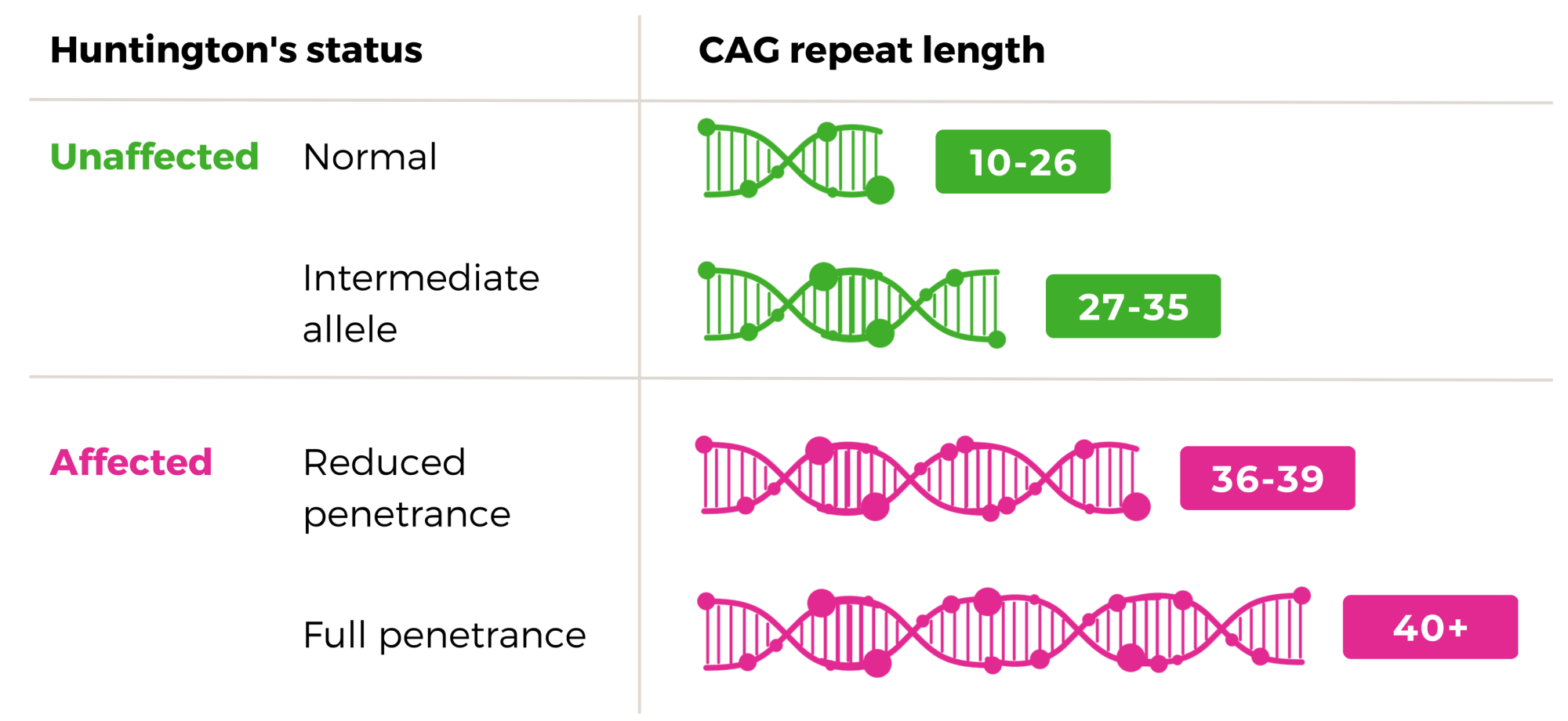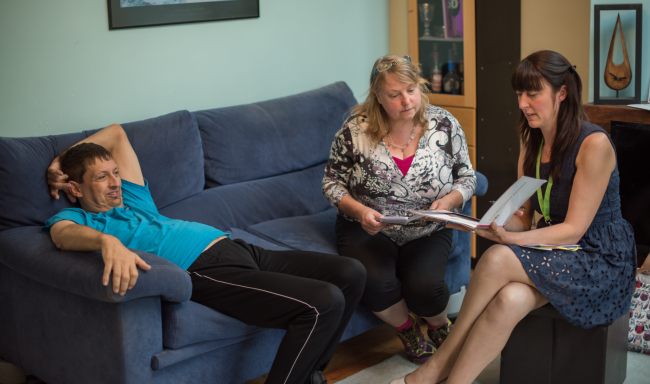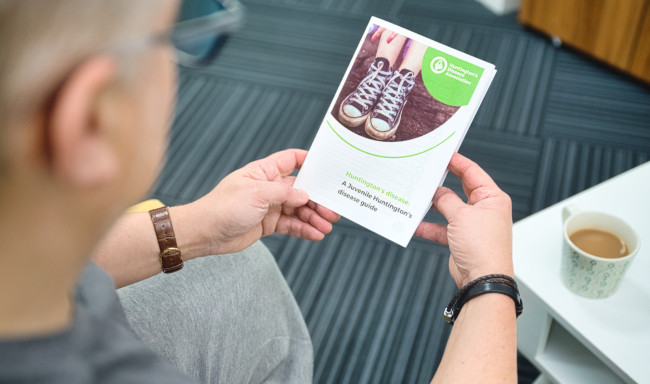Huntington’s disease is a genetic disease with a 50% chance of passing it down to the next generation.
The genes
Everyone has two copies of the Huntington's gene - one inherited from each parent
For those who don't know, a gene is a piece of hereditary information which is present in every cell of the body and tells cells what to do and when to do it. Genes are usually attached to a chromosome (a strand of DNA containing many different genes). Each human cell contains around 25,000 genes and most have 23 pairs of chromosomes.
The gene that causes Huntington’s is often called the huntingtin gene (HTT). It is attached to chromosome number four. It produces an important protein, called huntingtin, which is needed by nerve cells in the brain (neurons) and for the body’s development before birth.
CAG repeat
CAG is a DNA code. DNA (Deoxyribonucleic acid) is a self-replicating material that is present in nearly all living organisms. It is the carrier of genetic information. The four chemicals that make up DNA are A (Adenine), T (Thymine), C (Cystostine) and G (Guanine). The code for the Huntington’s gene contains three of these chemicals C, A and G which are repeated over and over again in a particular sequence.
When the huntingtin gene is faulty, the huntingtin protein it produces repeats certain genetic sequences known as CAG (cytosine-adenine-guanine) too many times. This in turn appears to damage neurons in certain areas of the brain - although how and why this happens is not yet fully understood.
A normal CAG repeat is between 10 and 26. Usually one of your CAG repeats will be in this region (unless you inherited it from both parents although this is very rare). If one of your CAG repeats is over 40, this means that you will go on to develop Huntington's disease at some stage.
Where it gets a little more complicated is the intermediate allele and reduced penetrance, but you can find out a little more about these on the tested positive and tested negative pages.

Some facts about genetics and Huntington’s
- Every child conceived naturally to a parent who has the faulty gene has a 50 % chance of inheriting it and the disease. If both parents have the faulty gene the child has a 75 % chance of inheriting it.
- The faulty gene that causes Huntington’s repeats a particular coding sequence known as CAG (cytosine-adenine-guanine) too many times - a bit like adding too much of one ingredient in a recipe. This means the protein it makes damages nerve cells in the brain.
- If the person has 40 or more CAG repeats, it is certain that they will develop Huntington’s at some point.
- More than 50 CAG repeats, it is highly likely that this will be Juvenile Huntington’s (experiencing symptoms before the age of 20). But not everyone with a high CAG count develops Juvenile Huntington’s.
- Less than 10% of people with the faulty Huntington’s gene have more than 50 CAG repeats, making Juvenile Huntington’s a very rare disease.
- If the person does have more than 50 repeats, there is a 90% chance that the faulty gene was from their father as CAG repeats tend to be more unstable when passed on from the man. We don’t yet know for sure why this is, but it is thought to be because the gene becomes more unstable in sperm.
- People can find out if they carry the faulty gene by taking a blood test known as a predictive test. They need to be 18 years old to take the test.




